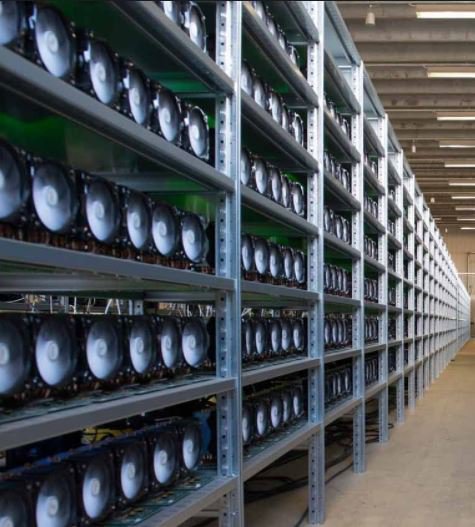Digital Revolution?
Power-intensive digital currency mining comes to the Pacific Northwest
- April 05, 2018
- Massoud Jourabchi

The world is getting to know digital currencies, and the large power demand from the computer-intensive operations that discover and verify them is causing a variety of responses among electric utilities, from concern to excitement. The Northwest, with its low-cost, environmentally clean electricity, easy access to telecommunication networks, and temperate climate that moderates the cost of cooling hundreds or thousands of computers, has attracted digital currency operations for the same reasons that Facebook, Apple, and others have located large data centers here.
Digital currencies exist only in the ether of the Internet and are not tied to normal financial markets or currencies. There is no regulatory oversight of digital, cryptocurrency markets in the United States or at a global level. Because of that, financial market experts around the world are wondering whether the growing interest in digital currencies is a bubble or a revolution.
Digital currencies need verification through a process called mining. These mining operations use anywhere from dozens to thousands of computers running a variety of hardware operating systems and can consume millions of watts of power. The most well-known digital currency is BitCoin. The goal of BitCoin, which first appeared in 2009, with its underlying distributed ledger technology known as blockchain, was to create a decentralized, trustworthy method of transmitting money from individuals or organizations to other individuals or organizations without a central controlling body like a bank.
The majority of the operating cost for mining BitCoin and other so-called cryptocurrencies is for electricity. BitCoins, once created and awarded to a miner, can be bought and sold using real dollars. Over time, and intentionally, the degree of difficulty in validating and adding blocks of transactions to the BitCoin blockchain increases and with that the computational complexity and need for more computers and more electricity. The actual dollar value of BitCoin has been a roller coaster ride. In 2017, for example, the value ranged from around $1,200 in April to a high of $19,197 on December 16. The current value is around $6,700.
Blockchain as a technology is attractive for two primary reasons – first, it creates an ever expanding distributed digital record of every transaction, and second it is almost anonymous. The transactions can only be viewed with proper decrypted public and private keys, enhancing security. Blockchain has potential applications outside digital currency mining. Electric utilities, for example, are interested in blockchain applications as a means of recording every transaction for complex power products and services such as sales of distributed energy, or energy storage transactions, or electricity trading.
Although the full magnitude of the impact of mining operations on the power grid is not known, it is well known that a single mining operation could put multiple megawatts of load on a utility system (a megawatt is 1 million watts, enough to power 718 Northwest homes). A number of Northwest utilities including, for example, the Chelan County Public Utility District in Wenatchee, Washington, and the City of Cheney, Washington, municipal utility, have been approached by digital currency mining operators and have adopted different postures toward the requests. Chelan recently imposed a moratorium on new service to digital miners, having already served some digital mining load. Cheney is going ahead, but also is requiring the companies to pay a fee for connection to ensure that other ratepayers aren’t left paying for new infrastructure to serve the load if a digital mining operation closes.
It’s hard to know now whether digital currency mining is a flash in the pan or a golden opportunity for currency mining businesses. The present Northwest electricity load of digital currency mining operations is estimated between 20 and 30 average megawatts – significant, but not huge. Based on what is known now about future potential load from currency mining operations, the region should be able to handle the influx of new demand. A big part of the reason for this is that the Northwest has done such a good job maintaining load growth near zero over the recent decades despite economic growth because of large investments in energy efficiency, which reduces demand for power.



